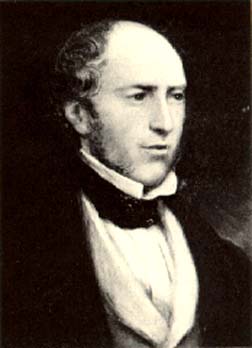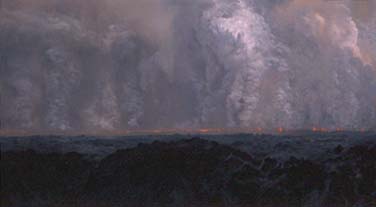 Featured
Geologist: John Phillips (proposed three-part division of the geological
record in 1841)
Featured
Geologist: John Phillips (proposed three-part division of the geological
record in 1841)source of image
Notes for Evolution - The Triumph of an Idea - Chapter 7
Click link to return to Biology
409 Schedule
or back to Chapter 6 or ahead to Chapter
8
General guide on these review questions here
Chapter 7 - Extinction - How Life Begins Again
PBS Website Link
Objectives:
a) Contrast Darwin's gradualistic pattern of extinctions with the current understanding of extinction episodes.
b) Consider competing hypotheses that might individually or together explain the most dramatic extinction events.
c) Draw generalities about typical patterns of recovery following a mass extinction event.
d) Become familiar with the evidence that humans have historically been responsible for species extinctions.
e) Contrast pessimistic and optimistic views of the future of biodiversity on a planet increasingly populated by humans.
Introduction
Links on Mass Extinctions: 1 - 2 - 3 - 4 - 5 - 6 - 7 - 8 - 9
 Featured
Geologist: John Phillips (proposed three-part division of the geological
record in 1841)
Featured
Geologist: John Phillips (proposed three-part division of the geological
record in 1841)
source
of image
I. Introduction
RQ Ev-7.1: In retrospect, in what way was Darwin wrong about the pattern of extinctions in the fossil record?
II. The Great Curve
 Featured
Scientist: John Sepkoski
Featured
Scientist: John Sepkoski
source
of image
RQ Ev-7.2: Over the last 600 million years, when were the five most extensive major extinction events?
III. The Permian-Triassic Extinction: Brushing with Annihilation
See cool map of the Earth during the late Permian (255 MYA) here.
Did an asteroid impact cause this extinction event? Links: 1 - 2 - 3 - 4
Key Terms: synapsids (links: 1 - 2 - 3 - 4 - 5 - 6 - 7 - 8 - 9)
RQ Ev-7.3: What are the primary hypotheses for explaining the Permo-Triassic extinction event and what evidence supports each?
IV. Rebirth
RQ Ev-7.4: Describe the pattern of "rebirth" of land animals and plants following the Permo-Triassic extinction event.
V. Mammals: A Tiny Beginning
RQ Ev-7.5: What is the evidence that the early mammals were not superior to other land vertebrates? What ecological roles were they able to occupy during the Mesozoic Era?
VI. Death from Above

Visit the Source of this Page's Featured Image (© Douglas
Henderson)
Representing the Long-lasting Late-Cretaceous Outpouring of Basalt in India
at Douglas Henderson's Earth
History Illustrations Website
Links on the K/T Extinction event: 1
- 2
- 3
- 4 - 5
- 6
- 7 - 8
- 9
- 10
- 11 - 12
- 13 - 14
Send a simulated asteroid at your favorite planet here
RQ Ev-7.6: Summarize the evidence that the K/T extinction event was primarily related to a massive asteroid (or comet) impact.
VII. Mammals Take the Field
RQ Ev-7.7: What was the pattern of land vertebrate recovery following the K/T extinction event?
VIII. Human Extinctions: The First Waves
RQ Ev-7.8: What evidence implicated humans in causing various recent extinction events, starting some 50,000 years ago?
IX. History in a Hole
RQ Ev-7.9: Summarize the pattern of extinction on the Hawaiian island of Kauai, based on studies by David Burney.
X. The Extinctions Accelerate
RQ Ev-7.10: Describe the relationship between extinction due to habitat fragmentation and the theory of island biogeography, as formulated by Robert MacArthur and E. O. Wilson (see p. 153-154).
XI. Alien Invasion
RQ Ev-7.11: What factors promote the often substantial success of "alien invader" species, and why are they considered among the most significant threats to the preservation of biodiversity?
XII. The Future of Extinctions
RQ Ev-7.12: What are the long-term implications of Stuart Pimm's finding that extinction patterns resemble that of radioactive decay?
XIII. Humanity Leaves its Mark
RQ Ev-7.13: What can humans do over the next century to lessen the extent of global extinctions?
Click link to return to Biology
409 Schedule
or back to Chapter 6 or ahead to Chapter
8
This page created 2/3/03 © D.J. Eernisse, Last Modified 4/5/03, Links Last Completely Checked 4/5/03